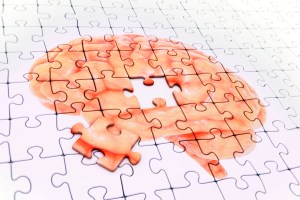Advanced blood analysis may speed diagnosis of heart attacks
Study of ‘planned’ heart attacks identifies markers that could improve treatment, save lives
Someday doctors may be able to use a blood test to confirm within minutes, instead of hours, if a patient is having a heart attack, allowing more rapid treatment that could limit damage to heart muscle. A study led by investigators from Massachusetts General Hospital (MGH) and the Broad Institute of Harvard and MIT reports that a new technique that measures hundreds of molecular markers in the blood can identify those released when cardiac tissue is injured by a lack of oxygen. The report will appear in the October Journal of Clinical Investigation and has received early online release.
“Right now there are no blood markers for reversible myocardial injury in clinical use, and the only available markers are not detectable until hours after the onset of tissue damage. Because our treatments for heart attacks are most effective in the first hours after symptoms occur, these newly identified markers could help us apply treatments sooner and help more patients,” says the study’s senior author Robert Gerszten, a Harvard Medical School Associate Professor of Medicine at the MGH Division of Cardiology and Center for Immunology and Inflammatory Diseases.
Every metabolic activity in the body results in the production of metabolites, molecules released in often-minute quantities. A blood sample contains hundreds of these metabolites that could provide a chemical ‘snapshot’ of an individual’s heath status. But the technology to assess metabolite levels is in the early stages, as is the understanding of their significance. For instance, how much metabolite levels normally vary between healthy individuals and factors that influence those variations is still unknown.
In the current study, the research team took advantage of a procedure that is, in essence, a planned heart attack. In a condition called hypertrophic cardiomyopathy, bloodflow out of the heart is obstructed by a massive thickening of the wall between the left and right sides. This tissue overgrowth can be treated with a technique called septal ablation – pioneered by Michael Fifer, MD, of MGH Cardiology – that destroys the excess tissue, a scenario that mimics the damage that happens to heart muscle when its blood supply is cut off. Taking blood samples before and after patients receive this procedure provides a unique window into metabolic changes that occur in response to the death of myocardial tissue, allowing study participants to act as their own controls.
The researchers analyzed blood samples from 36 patients taken before and at several time points after septal ablation. Using an advanced mass spectrometry system that can assess hundreds of metabolites in as little as 10 minutes, they were able to identify several that significantly changed right after the ablation process, a time period during which currently available markers remained unchanged. The changes seen in the first 10 minutes persisted an hour later, and analysis of blood from veins in the coronary circulation confirmed that the heart was the source of the changes.
Comparing the results of these ‘planned’ heart attacks with blood samples from patients with spontaneous coronary blockages found four metabolites that increased in response to ablation and also were elevated in patients with true heart attacks, confirming them as markers of myocardial damage. The researchers also examined whether these newly identified metabolites had any effect on the response of cultured animal heart cells to reduced oxygen and found that one metabolite increased cell death, while two others decreased it, possibly identifying a pathway for future therapies.
“This work is proof of principle that this new technology will work for diagnosis and may also help us find new targets for therapeutic intervention. Someday we may be able to reverse the damage from a heart attack with a ‘cocktail’ of protective metabolites,” explains Gerszten, who is a senior associate member of the Broad Institute. The study was supported by grants from the National Institutes of Health, the Donald W. Reynolds Foundation, and the Leducq Foundation. The MGH has filed a patent for the use of metabolic biomarkers to assess and reverse the kind of cardiac damage produced in a heart attack.
The study’s lead author is Gregory Lewis, of MGH Cardiology. Additional co-authors are Emerson Liu, Xu Shi, Maryann Martinovic, Laurie Farrell, Aarti Asnani, Marco Cyrille, MD, Odred Shaham, Patricia Lowry, Igor Palacios, Vamsi Mootha, and Michael Fifer, of the MGH; Marc Sabatine, Brigham and Women’s Hospital; Ru Wei, Elaine Yang, Arvind Ramanathan, Hasmik Keshishian, Terri Addona, and Steven Carr, Broad Institute of Harvard and MIT; Gabriel Berriz, Murat Tasan, and Frederick Roth, Harvard Medical School; Jiangyong Min and Anthony Rosenzweig, Beth Israel Deaconess Hospital; and Christian Baumgartner, University for Health Sciences, Medical Informatics and Technology, Tirol, Austria.





